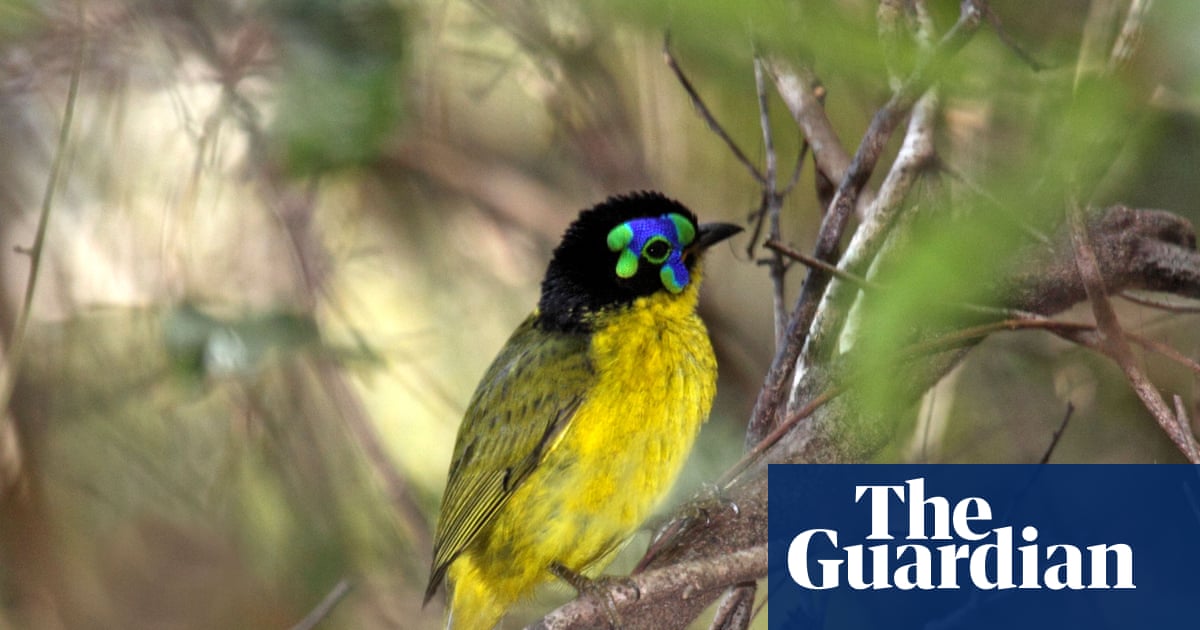More than half of all bird species are in decline, according to a new global assessment, with deforestation driving sharp falls in populations across the planet.
On the eve of a key biodiversity summit in the UAE, scientists have issued a fresh warning about the health of bird populations, with 61% of assessed species now recording declines in their numbers.
From Schlegel’s asity in Madagascar to the tail-bobbing northern nightingale-wren in Central America, many bird species have lost habitat to expanding agriculture and human development. Just nine years ago, 44% of assessed bird species had declining populations, according to the red list of endangered species from the International Union for Conservation of Nature (IUCN).
Dr Ian Burfield, BirdLife’s global science coordinator, who helped oversee the assessment, said: “That three in five of the world’s bird species have declining populations shows how deep the biodiversity crisis has become and how urgent it is that governments take the actions they have committed to under multiple conventions and agreements.”
It comes as hundreds of conservationists gather in Abu Dhabi on Friday for the IUCN’s congress, where the fate of many of the world’s most at-risk wildlife species will be discussed. In the face of global headwinds on environmental action, scientists are urging governments to deliver on recent pledges to better protect nature.
Birds play an important role in ecosystems, helping to pollinate flowers, disperse seeds and control pests. Hornbills – which are found across the tropics – can spread up to 12,700 large seeds a day in a square kilometre.
Dr Malin Rivers, head of conservation prioritisation at the Botanic Gardens Conservation International, said: “The fates of birds and trees are intertwined: trees depend on birds for regeneration and birds depend on trees for survival.”
The green sea turtle’s recovery “reminds us that conservation works”, said the IUCN director general, Dr Grethel Aguilar. Once classified as endangered, it is now viewed as a species of least concern due to conservation efforts. The turtles’s numbers have grown by 28% since the 1970s thanks to greater protection for nest sites in Ascension Island, Brazil, Mexico and Hawaii.
A Pacific green sea turtle cruising off Hawaii. The recovery of the species shows what global conservation efforts can achieve, experts say. Photograph: Chris Strickland/Alamy
Roderic Mast, co-chair of IUCN’s species survival commission marine turtle specialist group, said the green turtle’s recovery was “a powerful example of what coordinated global conservation over decades can achieve to stabilise and even restore populations of long-lived marine species”.
But there was bad news for Arctic seals, which scientists warn are drifting closer to extinction due to global heating. The loss of sea ice has seen population numbers for bearded and harp seals fall sharply. Thinning sea ice means that the Artic seals are finding it more difficult to find areas to rest and breed. They are a critical prey species for polar bears, which researchers fear will also be affected by the loss.
Dr Kit Kovacs, Svalbard programme leader at the Norwegian Polar Institute, said: “Each year in Svalbard, the retreating sea ice reveals how threatened Arctic seals have become, making it harder for them to breed, rest and feed.
“Their plight is a stark reminder that climate change is not a distant problem – it has been unfolding for decades and is having impacts here and now.”
Find more age of extinction coverage here, and follow the biodiversity reporters Phoebe Weston and Patrick Greenfield in the Guardian app for more nature coverage.

